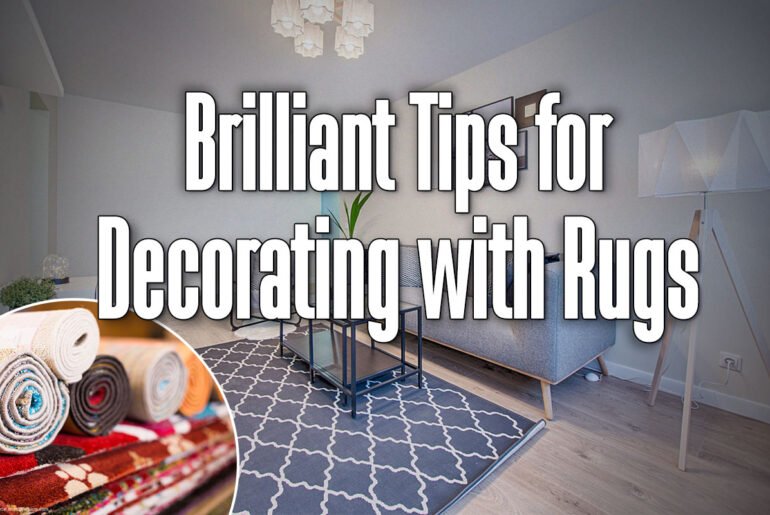Here are brilliant tips for decorating with rugs your living room so it becomes a space that everyone in the family can enjoy.
Adding a rug to a room that is dull and lifeless will solve the problem. While this alone is enough to tempt you to decorate with rugs, there are several more compelling reasons. You could even suggest that a rug joins all of the various components together visually by completing a space. A rug may help bring order to chaos, define the area, provide comfort, and layer your decor.
There are numerous alternative methods to decorate with a rug, but we’ll start with ten of them:
Use Rugs to Define Areas
Rug usage to define or separate regions, such as sitting and dining areas, and foyers, is a great way to add design elements in small spaces. This is particularly useful in studio apartments or larger rooms that require definition.
Create Variety
Rugs may be used to add variety to a room. When using two rugs in a space, keep in mind that identical size rugs may visually divide the room. To create a sense of variety, use different-sized rugs.
Create Harmony
When utilizing more than one rug, it’s best if they match in style. If not, you may wind up with an odd or unpleasant effect. Too many “warring” designs in a room will destroy any sense of balance.
Get Ideas for a Color Scheme
In a space, use a favorite rug as the foundation for the color scheme. If you put it on after you’ve installed your pieces of furniture, however, you may utilize it to accent or connect with your existing colors.
Control the Volume
Use a rug to visually tone down a space or turn the volume up as needed. Choose a rug that is less ornate if your furniture or wall covering has an intricate design. To add more interest to a room that features simple walls and furnishings, try using a busy design or brighter colors.
Create a Focal Point
A rug may make a big impact in your space if used as the focal point. To do so, paint your walls with a hue that mirrors one of the highlights on your rug.
Dress Up a Wall
For another method to show a rug or to create a focal point, use a rug as a wall hanging.
Play Around With Shapes
A rug does not have to be a rectangle, so don’t make that assumption. Let your furniture arrangement determine the shape of your rug’s pattern. If a square, round, or oval shape appears to complement your furnishings better than a rectangular one, try determining which form may look best and then go with it.
Make Sure to Get the Right Size
When purchasing a room-size rug, subtract 3 feet from the length and width of the room. The edges of the room appear wider without floor coverings. When laying a rug beneath your dining table, leave at least 24″ on all sides of the edge of the table. The back legs of the chairs are supported by this design, allowing them to stay on the rug even when they’re pulled out to accommodate someone. The width of the hall should be 4 inches narrower than your hallway and 18 to 24 inches shorter. When walking across the rug, make sure both feet can fit comfortably.
Update a Room
Replace rugs and pillows to update a space for seasonal changes, or as a method of introducing new color trends.
Bonus Tip:
To prevent your rug from slipping or rolling, use a liner on it. The rug liner should match your flooring and be large enough to fully restrain the rug from moving.




4 Comments
Pingback: The Best Affordable Rugs of 2022 - Discover the yard
Pingback: The Best Area Rugs to Add a Cozy and Stylish Layer - Discover the yard
Pingback: 9 Rug Trends You'll Want to Know - Discover the yard
Pingback: Best 12 Places to Buy a Rug - Discover the yard